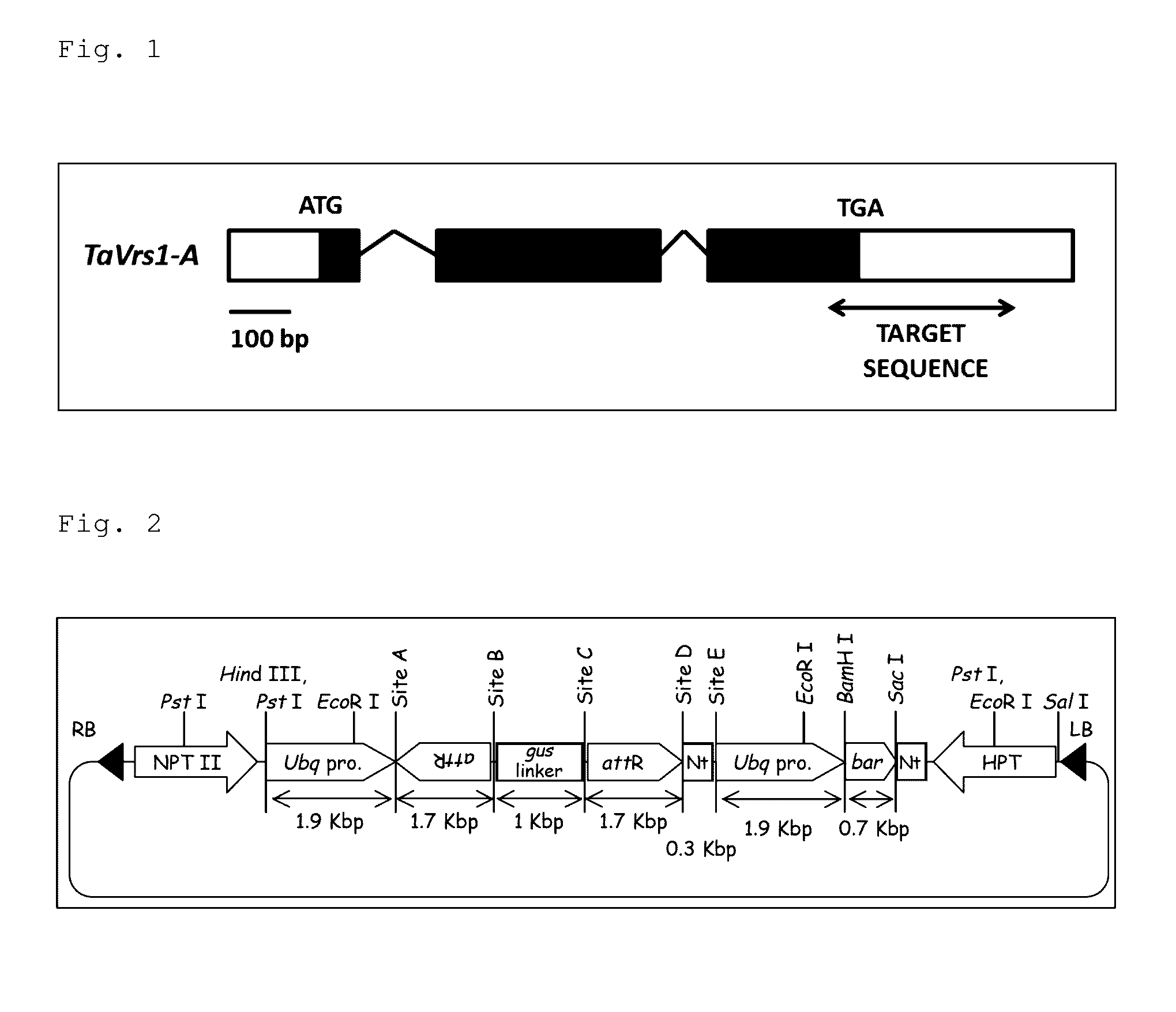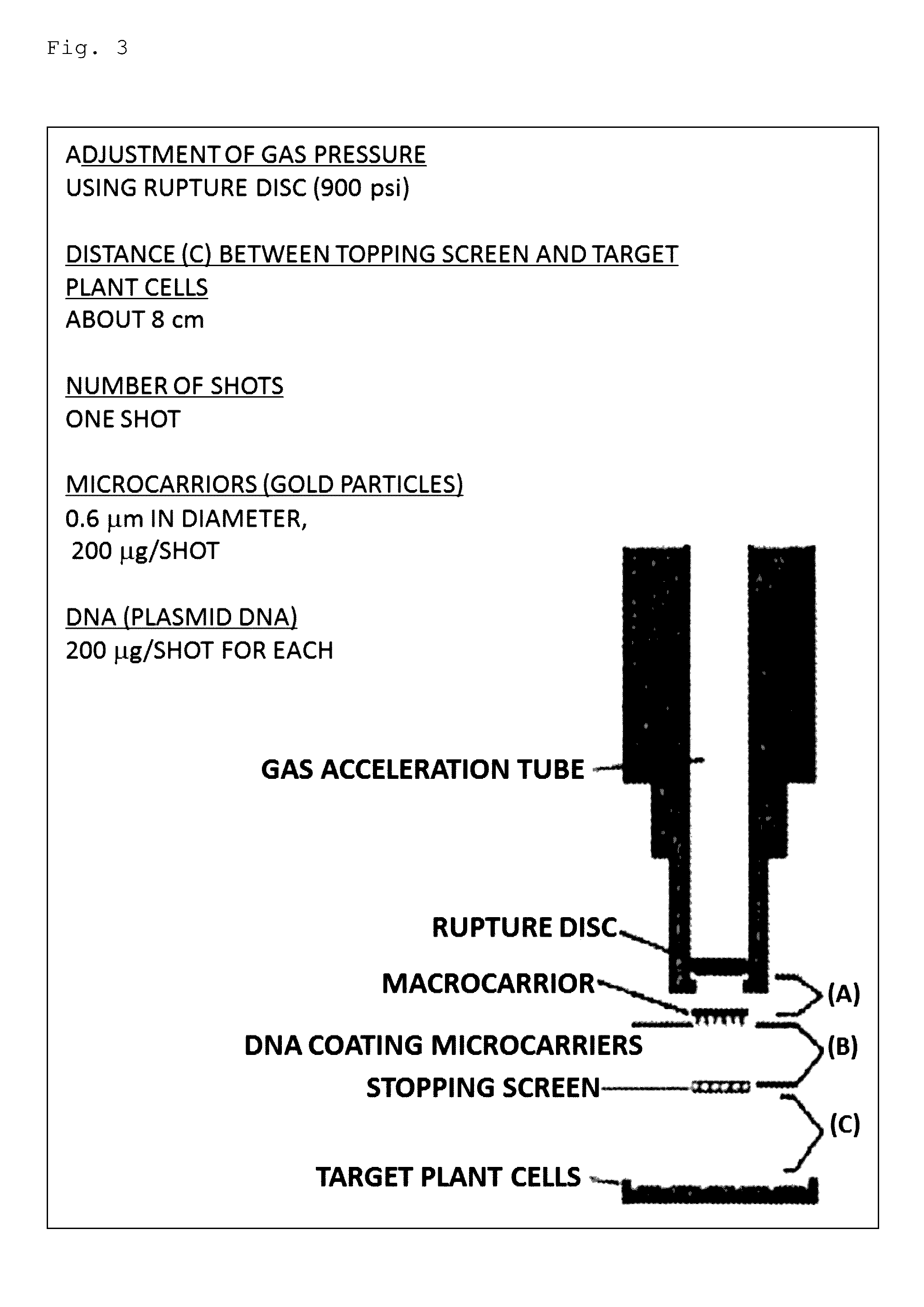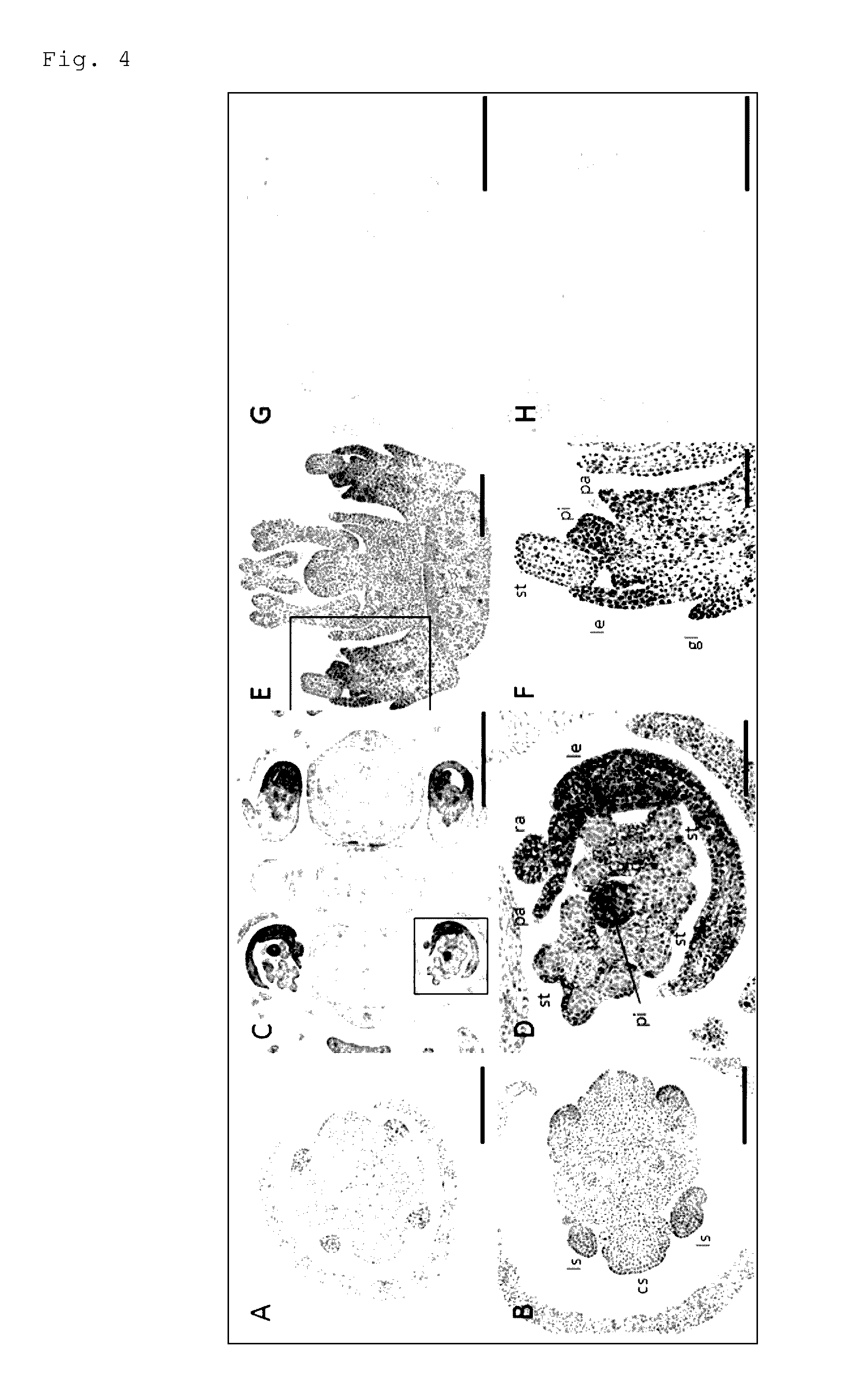Wheat with increased number of grains and method for producing the same, and agent for increasing the number of wheat grains
a technology of increasing the number of grains and methods, which is applied in the direction of recombinant dna-technology, biochemistry apparatus and processes, dna/rna fragmentation, etc., can solve the problems of limited yield, mainly the soil deterioration, and the chronic food shortage continues mainly, so as to increase the number of fertile florets and increase the number of grains and yield
- Summary
- Abstract
- Description
- Claims
- Application Information
AI Technical Summary
Benefits of technology
Problems solved by technology
Method used
Image
Examples
example 1
Analysis on Expression of Barley Vrs1 Gene and HvHox2 Gene by RNA In Situ Hybridization
[0154]The expression of the Vrs1 gene in immature spikes at various developmental stages of two-rowed barley cv. (see Bonus, Kirby, E. J. M. and Appleyard, M., “Cereal development guide”, 1981, Kenilworth: Cereal Unit) was detected by RNA in situ hybridization. The obtained results are shown in FIG. 4.
[0155]The probe used in this RNA in situ hybridization is a barley Vrs1-specific probe (about 300 bp of 3′UTR in the Vrs1 gene, see FIG. 5). The sequence of the probe is not present in the HvHox2 gene or the HvHox3 gene which is a gene homologous to the Vrs1 gene (see Sakuma, S. et al., Funct Integr Genomics, 2010, volume 10, 123-133 pages). The HvHox2 gene is a gene with the highest homology to the Vrs1 gene, and the HvHox3 gene is a gene with the second highest homology to the Vrs1 after the HvHox2 gene (Matsumoto, T, et al., Plant Physiol, 2011, volume 156, 20-28 pages). Therefore, the RNA in situ...
example 2
Analysis on Expression of Barley Vrs1 Protein in Barley by Immunostaining
[0165]In order to examine the tissue-specific localization of the barley VRS1 protein, the immunostaining using an anti-VRS1 antibody was carried out. As a result, the signal of the barley VRS1 protein was detected in the lateral spikelets of the two-row spike (Bonus) at the awn primordium stage (see A and B of FIG. 7). No signal was detected in the central spikelet. These data correspond with the localization of the barley Vrs1 mRNA in the lateral spikelets as described above, indicating that the Vrs1 mRNA is translated into the VRS1 protein in the two-row spike.
[0166]PredictProtein database (http: / / www.predictprotein.org / ) analysis predicts that the VRS1 protein and the HvHOX2 protein have nuclear localization signals of “RRRRRRSAR” (SEQ ID NO: 28) and “RPRARRRRRRAAR” (SEQ ID NO: 29), respectively, which leads to the assumption that the targets of these two proteins are present in the nucleus. In order to con...
example 3
Analysis 1 of Expression of Barley Vrs1 Gene and HvHox2 Gene by qRT-PCR
[0168]In order to analyze the expression level of the barley Vrs1 gene and the HvHox2 gene in barley tissues, immature spikes were isolated from a two-row cultivar (Golden Promise (GP)) at the green anther stage. Awn tissues, stem tissues, and leaf tissues were also isolated from this variety at the flag-leaf stage. The quantitative reverse transcription PCR (qRT-PCR) analysis was then carried out. The obtained results are shown in FIG. 8.
[0169]In the qRT-PCR analysis, the PCR primers specific to 3′UTR of the respective genes were designed in order to compare the gene expression level at different developmental stages. It has been confirmed that no homology is observed between these primers and the HvHox3 gene. Furthermore, in the qRT-PCR analysis, the RNA expression level in each sample was normalized on the basis of the expression of the HvActin gene which is constitutively expressed during the developmental st...
PUM
| Property | Measurement | Unit |
|---|---|---|
| wet weight | aaaaa | aaaaa |
| length | aaaaa | aaaaa |
| length | aaaaa | aaaaa |
Abstract
Description
Claims
Application Information
 Login to View More
Login to View More - R&D
- Intellectual Property
- Life Sciences
- Materials
- Tech Scout
- Unparalleled Data Quality
- Higher Quality Content
- 60% Fewer Hallucinations
Browse by: Latest US Patents, China's latest patents, Technical Efficacy Thesaurus, Application Domain, Technology Topic, Popular Technical Reports.
© 2025 PatSnap. All rights reserved.Legal|Privacy policy|Modern Slavery Act Transparency Statement|Sitemap|About US| Contact US: help@patsnap.com



